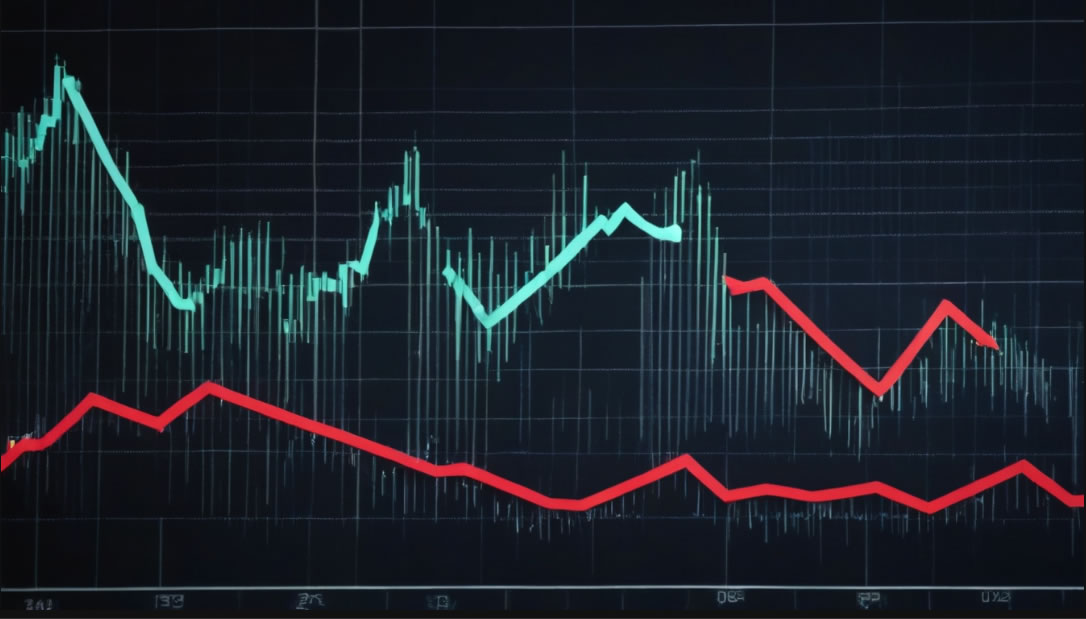Stock prices and market cycles intertwine, offering a complex landscape for investors. Understanding these fluctuations is key to maneuvering the ups and downs effectively. Market psychology and economic indicators shape cycles, impacting investor sentiment and stock prices. Historical patterns and volatility indexes provide insights for risk management. In bear markets, defensive strategies and diversification are essential, while bull markets offer growth opportunities for long-term benefits. Diversifying across asset classes can enhance portfolio resilience. Deciphering these dynamics is essential for maximizing investment potential and weathering market fluctuations. Additional insights await on this insightful journey.
Understanding Stock Market Cycles

Understanding stock market cycles reveals how prices fluctuate over time based on various economic factors and investor behavior. Market psychology plays a pivotal role in shaping these cycles. Investor sentiment, fear, and greed can drive stock prices to extreme highs or lows, leading to overvalued or undervalued markets. Economic indicators, such as GDP growth, employment rates, inflation, and interest rates, also influence market cycles. For instance, during economic expansions, stock prices tend to rise as businesses grow, while during recessions, prices may decline as companies struggle.
Analyzing Price Volatility Trends
Price volatility trends in the stock market can provide valuable insights into the market’s dynamics and potential investment opportunities. Analyzing price fluctuations is essential for well-informed decision-making in stock investments. Here are three key points to keep in mind when examining price volatility trends:
- Historical Patterns: Reviewing past price movements can reveal cyclical patterns, helping investors anticipate future market behavior.
- Volatility Index: Monitoring volatility indexes like the VIX can indicate market sentiment and the level of uncertainty among investors.
- Correlation Analysis: Understanding how different assets within a portfolio correlate during periods of high price volatility can assist in risk management strategies.
Market analysis tools and techniques can help investors make sense of price fluctuations and identify potential opportunities amidst market turbulence. By staying informed and leveraging data-driven insights, investors can navigate the complexities of price volatility trends to make well-informed investment decisions.
Strategies for Bear Markets

During periods of bear markets, investors often seek out defensive strategies to safeguard their portfolios against potential downturns in asset prices. Risk management becomes vital in such turbulent times, with investors looking to mitigate losses and preserve capital. One common strategy is to allocate a portion of the portfolio to defensive positions such as bonds, gold, or defensive stocks that are less susceptible to market fluctuations. These assets tend to perform better when the broader market is experiencing a downturn, providing a cushion against losses.
Another approach to weathering bear markets is through diversification. By spreading investments across different asset classes and industries, investors can reduce their exposure to any single market risk. This can help offset losses in one area with gains in another, potentially smoothing out overall portfolio performance during volatile market conditions.
Additionally, maintaining a long-term perspective and avoiding knee-jerk reactions to short-term market movements is essential. Emotions can drive investors to make hasty decisions that may not align with their overall investment goals. Staying disciplined and sticking to a well-thought-out investment strategy can help navigate bear markets with more confidence and resilience.
Capitalizing on Bull Market Opportunities
In a bull market environment, investors seek to capitalize on opportunities for growth and maximize their returns. To make the most of a bull market, investors can employ specific strategies and tactics. Here are three key approaches to contemplate:
- Stay Invested: Timing the market perfectly is notoriously difficult. Instead of trying to predict the highs and lows, investors in a bull market should stay invested for the long term to benefit from the overall upward trend.
- Quality Over Speculation: In a bull market, it can be tempting to chase high-risk, high-reward investments. However, focusing on quality companies with strong fundamentals and a history of consistent performance can provide more sustainable returns.
- Regularly Review and Rebalance: Market conditions can change rapidly, so it’s crucial to regularly review your portfolio and rebalance it if needed. This process ensures that your investments align with your risk tolerance and financial goals, helping you make the most of the bull market opportunities while managing potential risks.
Diversification: Key to Portfolio Resilience

Diversification plays a critical role in enhancing portfolio resilience by spreading risk across different asset classes and investments. By diversifying, investors can reduce the impact of volatility in any one investment, ultimately leading to more stable returns over time. Effective risk management through diversification involves strategic asset allocation to achieve a balance between risk and return.
| Benefits of Diversification | Explanation |
|---|---|
| Lower Risk Exposure | Spreading investments across various assets lowers the impact of market fluctuations on the overall portfolio. |
| Potential for Higher Returns | By investing in different asset classes, investors can tap into various market opportunities that may outperform others at different times. |
| Enhanced Portfolio Stability | Diversification helps in smoothing out the ups and downs in the market, leading to a more stable and resilient portfolio. |
